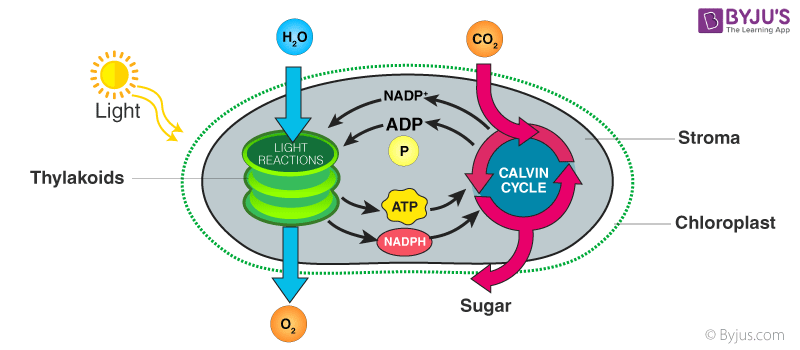Ever wonder how Photosynthesis helps in the creation of energy in plants? This is everything you need to know about the Chemiosmotic Hypothesis
What is Photosynthesis?
Photosynthesis is a biological process where plants create food and oxygen using solar energy. The process requires the plant to produce glucose, which is then used by the plant in the production of chemicals required for growth. Or it could be stored as starch and reconstituted into glucose when the plant needs it. Lastly, it could be used in the process of respiration, thereby liberating stored energy in the molecules.
Explore more: Photosynthesis
Chemiosmotic Hypothesis
In 1961, British biochemist by the name of Peter Dennis Mitchell theorized the Chemiosmotic hypothesis, which explains how the energy molecules (ATP: Adenosine triphosphate) are created during photosynthesis. His work was awarded the Nobel Prize as it provided a deeper insight into the complete process of ATP production within the chloroplasts.
NADP (Nicotinamide adenine dinucleotide phosphate, abbreviated NADP+) gets generated along with ATP during the light reaction or photochemical phase. These components are the key elements of photosynthesis. During the process, they are used in the dark reaction or Calvin Cycle to produce sugar molecules (final product).
The Process Of Chemiosmotic Hypothesis
In this process, ATP- Adenosine triphosphates are produced as the result of the proton gradient that exists across the thylakoid membrane. The fundamental components necessary for the chemiosmosis process are proton gradient, ATP synthase, and proton pump. The enzyme which is required for the synthesis of ATP molecules is called ATP synthase.
The enzyme ATP synthase consists of two subunits, namely: F0 and F1. The F0 subunit is involved in the proton transportation across the membrane, which causes changes in F1 configuration leading to the activation of enzymes. The enzyme phosphorylates ADP (meaning: to add a phosphate group) and converts ADP molecules to ATP molecules. The proton gradient that exists across the membrane is the primary driving force of ATP synthase.
In the light reaction phase of photosynthesis, chlorophyll absorbs light with the help of photosystems. This results in hydrolysis, where water molecules are split, releasing electrons and protons in the process. The released electrons get excited and move to a higher energy level and are carried by the electron transport system.
Meanwhile, the released protons from the stroma begin accumulating inside the membrane. This results in the creation of a proton gradient, a product of the electron transport chain. The small quantity of the resultant protons is used by photosystem I to reduce NADP+ to NADPH by electrons from the photolysis of water. Eventually, the proton gradient collapses, and it releases energy and protons that are carried out back to the stroma via F0 of ATP synthase. This resultant energy induces changes in F1 configuration and this, in turn, activates the ATP synthase, which converts ADP to ATP.
Also Read: Light Dependent Reactions

Learn more in detail about the chemiosmotic hypothesis, generation of ATP molecules and other related topics at BYJU’S Biology

Comments